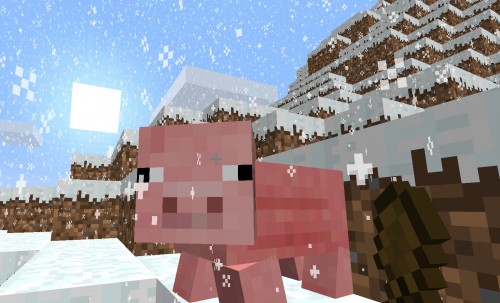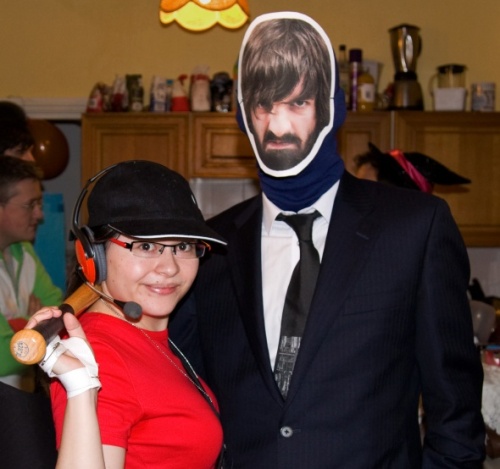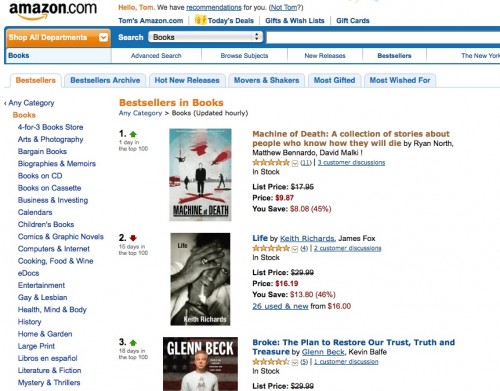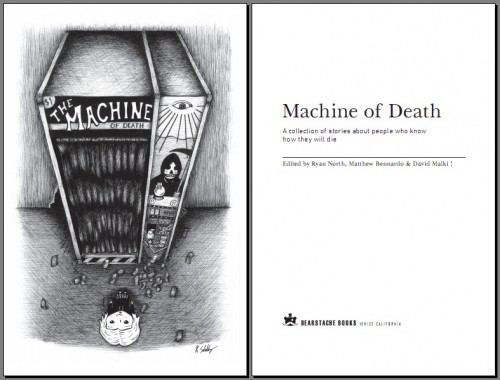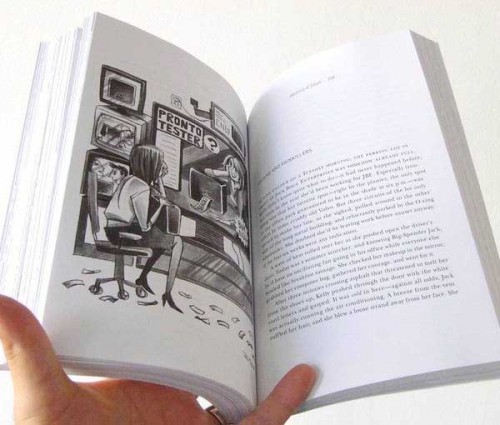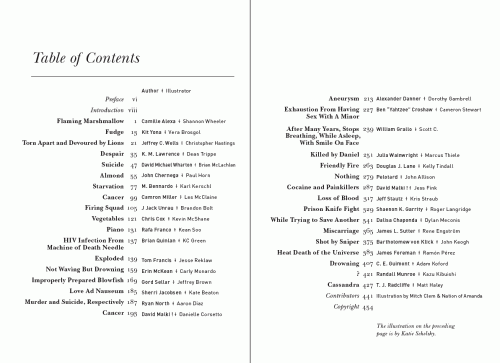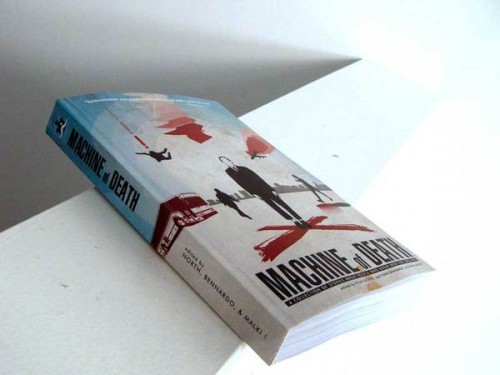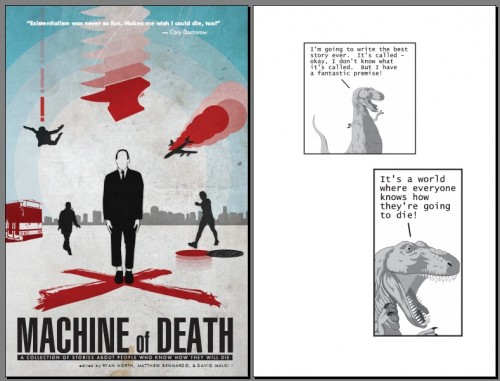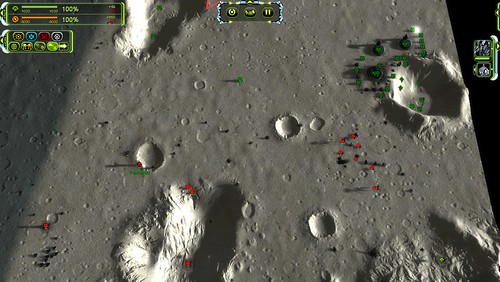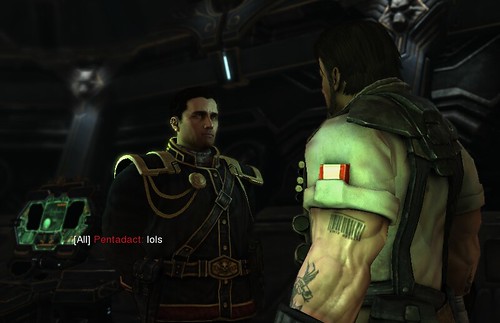TOM FRANCIS
REGRETS THIS ALREADY
Hello! I'm Tom. I'm a game designer, writer, and programmer on Gunpoint, Heat Signature, and Tactical Breach Wizards. Here's some more info on all the games I've worked on, here are the videos I make on YouTube, and here are two short stories I wrote for the Machine of Death collections.
Theme
By me. Uses Adaptive Images by Matt Wilcox.
Search
A Minecraft Diary And My Black Ops Review
The first entry of a Minecraft diary I’m starting just went up on PC Gamer – it’s just a short one to start with, but this might turn into a long-running thing. It’s about playing with a sort of permanent death rule: if I die, I have to delete the whole world and everything in it, then start again from scratch in a new one. It’s also starting from when I first played the game, so I know virtually nothing about how it works. The next entry will go up first thing tomorrow, and it’ll probably be every other day from then on. Continued
Phineas And Ferb
This made me laugh.
Povenmire and Marsh still found themselves fighting for some of their more surreal material. In several episodes, for instance, a character named Major Monogram interjects—apropos of nothing—the phrase “Ever since… the Academy.” A Disney executive quickly flagged the line, arguing (correctly) that it was utter nonsense. Povenmire assured him that it was exactly the kind of nonsense kids would parrot to one another at school. In fact, he felt so confident, he told the executive he expected to one day hear children repeat the line. The skeptical exec pledged to give Povenmire $100 for every time Povenmire heard it (unsolicited, of course). Continued
Halloween 2010
 Roughly from left to right: Craig as Dexter Morgan, Kim as The Scout, me as The Spy as Graham Smith, Jim as a witch, Anna as a witch, Graham as Minecraft Guy, Lisa as a dinosaur, Tim as a Murloc, Laura as Red Riding Hood, and Amanda as Sully.
Roughly from left to right: Craig as Dexter Morgan, Kim as The Scout, me as The Spy as Graham Smith, Jim as a witch, Anna as a witch, Graham as Minecraft Guy, Lisa as a dinosaur, Tim as a Murloc, Laura as Red Riding Hood, and Amanda as Sully.
 John made these amazing pumpkin desserts in little ramekin dishes, so he’s forgiven for coming as John Walker.
John made these amazing pumpkin desserts in little ramekin dishes, so he’s forgiven for coming as John Walker.
 The wrap-around made this even scarier than I’d intended.
The wrap-around made this even scarier than I’d intended.
 I eventually discovered for myself how disturbing it is to see someone else wearing your face.
I eventually discovered for myself how disturbing it is to see someone else wearing your face.
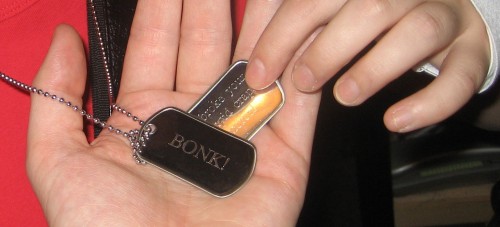 Kim’s custom-made dog tags – “BONK!” and “I broke your stupid crap moron!”
Kim’s custom-made dog tags – “BONK!” and “I broke your stupid crap moron!”
 I did not spend a lot of the evening with my mask correctly aligned.
I did not spend a lot of the evening with my mask correctly aligned.
And making this video is why Rich Cobbett is forgiven for coming as Rich Cobbett.
In reference to this.
 Pumpkin carving the previous night.
Pumpkin carving the previous night.
 This was mine, a dramatic departure from last year’s.
This was mine, a dramatic departure from last year’s.
Machine Of Death Is A #1 Bestseller: WTF
At about 7.30PM yesterday evening UK time, we finally pulled ahead of Keith Richards and became the #1 best-selling book on Amazon.com. Then we stayed there for twenty four hours. Sales were up 685,800%. We beat Glenn Beck’s new book on its launch day.
Apparently: “It was mentioned as number one on the Glenn Beck radio program this morning as an example of America’s preoccupation with death.” It was “a plea to his listeners to buy his book and not let us death-peddlers win.”
Thank you so, so much to anyone who bought it, and thanks to anyone who told other people about it. Not many people actually read the Machine of Death blog on a regular basis – not much has happened there for three years. So all this happened by people telling other people.
When the editors suggested a big push on the 26th, I thought it’d be cool, but we’d be gaming the system a bit. But really, we were just giving ourselves a launch day. We didn’t know when it would go up on Amazon.com, so we had to wait until it had before we could start organising any kind of campaign. Other books get to dictate a release date and plan around that – we did the same, we just had to rely on a little good will from people to delay until a launch day we could organise for.
Malki now has e-mails from four bookstores interested in stocking it, including Barnes & Noble, and one from the New York friggin Times. He and Ryan did a funny sort of mini-podcast to say thanks and stretch more sports metaphors.
A lot of people are asking how many copies we actually sold – I don’t have any insider info on that, but if Amazon’s percentage increase figures are right- wait, they’re not. See comments.
There’s lots more info on the PDF, audiobook, Kindle and Vulcan mindmeld editions on the official site, which’ll also have more info on if and when it’ll come to Amazon.co.uk and the like.
Thanks again everyone, particularly those in the UK who braved the shipping costs to support it. You have accomplished something amazing, annoyed Glenn Beck, and made me and a bunch of webcomic dudes very happy.
Machine Of Death Is Out: Here’s How To Get It
What is it?
A collection of short stories all based around the idea of a machine that can tell you how you will die. The book contains 34 stories by 33 different writers, and 35 illustrations by 35 different artists. My story is about the accidental inventors of the machine, and is illustrated by Jesse Reklaw of Slow Wave, a great comic incorporating reader-submitted dreams.
Headliners include Randall Munroe (XKCD), Yahtzee Croshaw (Zero Punctuation), Ryan North (Dinosaur Comics), John Allison (Scary Go Round), Kate Beaton (Hark! A Vagrant), Aaron Diaz (Dresden Codak), Dorothy Gambell (Cat And Girl), and Christopher Hastings (Dr McNinja). Here’s the full contents of stories and illustrators:
What’s the best way to get it?
1. Buy it on Amazon.com now. This is the best way to support the book, and the only place it’s currently available. It’s $17 in the US, or £11 plus £7 postage if you’re in the UK.
Sorry it’s a bit pricier than we’re used to in the UK – North America just generally charges more for books, and you could go for the cheapest postage option but it takes 18-32 business days. I’m not sure we have that many left on this Earth. You do get a lot of stories by cool people who aren’t me, though.
No progress yet on getting it into the UK Amazon or anywhere outside the US and Canada, so that won’t happen in the foreseeable future I’m afraid. That’s why we want to get a chart position on Amazon.com we can brag about.
If you know me in real life and live in Bath, let me know today if you want to buy a copy: it may make sense to order together this afternoon to save a little on postage.
2. From early November, I’ll be able to buy some copies wholesale and have them sent to people. This will not be significantly cheaper – about £15 with postage. But once that warehouse has them in, it’ll be quicker to send from there than from Amazon. Since that option is at least a week off, right now it’s not quicker to wait for this than to buy from Amazon, and it doesn’t support the project, so I don’t recommend it.
3. It will eventually be available as a free PDF. You won’t get the handsome physical object, but you will get to read the stories.
4. They’re working on a Kindle version too, which won’t be free. It’s not ready yet, but if you’d like to support day one sales, you can just buy the actual book on Amazon today, and forward the editors your receipt e-mail for a free Kindle version once it’s out.
5. Finally, we’ll be releasing a free audiobook of Machine of Death episodically – one story at a time as an ongoing podcast.
“Our (free) audiobook will include the voice talents of many of the authors, plus Jesse Thorn, MC Frontalot, Zach Weiner, Lore Sjöberg, Dave Kellett, Kris Straub, Colleen AF Venable, Joel Watson, and one other secret person we’re waiting to confirm. Yahtzee Croshaw reads his own story.”
If you’d prefer one of the free methods but still want to support the project, you can still buy it on Amazon to support day-one sales, and have it shipped to Machine of Death headquarters to save on postage. Your copy will be donated to schools, libraries or showing the book off to people – equally worthy causes.
Wondermark Enterprises
Attn: MOD
2554 Lincoln Blvd #214
Venice, CA 90291
I demand a free sample
Of course. Here are the first 40 pages as a PDF:
My story is still online for free. And here is the story HIV INFECTION FROM MACHINE OF DEATH NEEDLE, by Brian Quinlan, in its entirety:
I have now bought the book
Woo! Thanks! I’m actually pretty optimistic about our day one sales. I don’t get any money from the book doing well, but all proceeds go towards promoting it further, and I’d love to see it be more widely available. If you do get it, let me know in the comments. I imagine we’ll get some idea of how well it sells in general, but I’d love to hear if any came from here. I also want to say “Thanks!” a lot.
I can’t wait to read it myself – I’ve only read my own story and the one above, so I’ll be using some (most) of my contributor’s fee to buy a copy today. Randall Munroe’s – called ? – is about “what happens when physical science rejects the idea of precognition”. I am excited about this.
Gunpoint And The Other Game
I had an idea for another game, recently. It’s an RTS that would solve a lot of my main frustrations with RTSs, with a few fairly simple mechanics. And it’s an idea that keeps spawning other, smaller ideas, and suggesting parts of itself I might like to cut out to make it even simpler and better.
It’s gamey in a way that Gunpoint isn’t, in that it’s really just a few basic systems: no context, story or even content would be necessary for it to work on a basic level. And it might actually appeal to people outside of my skull, in a way that Gunpoint probably won’t. No logic or thought went into my choice of a jumpy platformer about a private detective for my first game, it was just the first idea that interested me. The RTS feels like something worth making, and something that someone else will probably make if I don’t.
In other words, everything’s been telling me to just stop making Gunpoint, learn Unity, and switch to this newer, better, more potentially successful idea.
I’m not going to. Abandoning an old idea doesn’t solve the problem of forever having newer, better ideas. They’re always going to come faster than you can make them, and for a while, they’re always going to make your old ones seem less exciting. Whatever you do in response to that is what you’re always going to do, so if I ditch Gunpoint to make this RTS, I’d ditch the RTS to make the RPG idea I’m inevitably going to have in six week’s time.
But going back to Gunpoint is harder now. Not because it’s an unexciting idea – the thing at the heart of Gunpoint, which I haven’t really talked about yet, still gets me totally fired up. But looking at it after this gleamingly simple, efficient new idea, it looked incredibly flabby, unfocused, and most of all daunting. I just don’t know how I’m going to do half this stuff, and some of it doesn’t seem very connected to what I’ve done so far.
I’ve tried to simplify Gunpoint lots of times, but I’ve never really questioned that it was going to be story-driven. It couldn’t just be missions, it had to be punctuated with scripted sequences, major characters and predetermined developments.
But that wasn’t really a design choice. I just automatically included it because I’d already written a bunch of scenes, dialogue and characters to flesh out the world in my head. It’s instinctive to write that kind of stuff when you’re thinking up a new world, and useful too. But I should have taken an extra step back and thought, “OK, why do I need to tell these stories to the player? And how much work is it going to be?”
 I don’t have any new screenshots to show you. Here are some horses.
I don’t have any new screenshots to show you. Here are some horses.Now that I take a more squinty-eyed look at the roadmap ahead, I start to see just how much coding each one of these things is, and how little it adds to the game as a game. Making non-interactive scenes on top of your interactive ones is like making a second game – a shitty game no-one can play. And I know from editing GTA IV movies that I’m an obsessively redactive director: I’d never quite be happy with the way they played out.
So I’m scrapping all the non-interactive stuff. There’ll still be story context for each mission, but it’ll be the text of the briefing you choose from some kind of job listings site, and text message conversations with the client.
Oddly, since restricting myself to this for practical reasons, I’ve found it also makes more story sense: you’re a private agent specialising in illegal activities, so you probably would get your jobs from an anonymous site rather than walk-in clients, and communicate by text rather than in person.
It was an easy choice to make – I don’t have to delete anything, because the stuff I’m scrapping is stuff I haven’t made yet. I probably would have given up on a lot of it when I did come to build it. But what the other game has helped me do is clear it out now, while I’m working on the cool stuff. I had to make Gunpoint a more appealing thing to work on, and that meant cutting reams of big wibbly translucent flab until I could see the route to completing it. It clears the head, brings the game into focus, and makes it feel achievable.
 Shrug.
Shrug.I’m always asking developers what they’ve learned from previous games, and sometimes they draw a blank. So I might start ending my Gunpoint diaries with a summary of what I’ve finally figured out.
Writers shouldn’t write games. Designers should give them a little box to write in, and they should write in that. I left my writer hat on way too long after coming up with a vague idea for the world of Gunpoint, and started writing the actual game. “This happens, then this happens, then you get this item-” Shut up! Games aren’t just first person movies, Tom. Design a thing that is fun, then write whatever story context that design needs.
‘Hard to do’ and ‘easy to do’ are irrelevant, ‘good value’ and ‘bad value’ are what matters. I say the story stuff was going to be hard to implement – it wouldn’t be, really. Not as hard as the central mechanic I’ve yet to start on. The difference is, if the central mechanic works, it’ll lead to dozens or even hundreds of fun interactions for each player. The story stuff would be fun a maximum of one time per player, likely not even that. It’s phenomenally bad value. If you’re Valve, and there’s some reason you really want to push this stuff, you can afford that. But if you’re one guy with no experience making games, you can’t.
Unrelatedly: Machine of Death day is in about eight hours. I’ve put together a post about how you can get it, what the postage will cost, and what other forms it’s going to be available in. That’ll go up once it’s officially MOD-Day.
Machine Of Death Needs Your Help Next Tuesday
So, the short story collection I’m featured in will be out on Amazon.com in the US shortly. Woo! No confirmed UK release, but postage is about £5 for us Brits. We would particularly love for you to buy it on October 26th – next Tuesday. Here’s a truncated explanation of why, and why it’s taken so long, from editor David Malki:
But it was 2008, 2009. “The economy,” we were told. “And it’s an anthology.”
And we live on the internet enough that we knew we could sell this book.
On October 26, we want to send a message that a little project dragged kicking and screaming from “crazy idea” past “it’ll never work” all the way to “By God, they actually did it” can make a big splash. We’re internet people; you are too. We want to prove to all the people who said “this will never sell” that that’s all that matters.
Did you know that on any given day, an Amazon.com bestseller only sells a few hundred copies? Sure, they sell a hundred copies a day for weeks and months on end, but what we’ve learned is that it only takes a few hundred sales on a single day to become an Amazon.com bestseller.
We want Machine of Death to become a Number One bestseller for exactly one day. October 26.
It would be awesome if you could spread around this link, that date, and click Attend on Facebook so we can see how many people are planning to buy. I’ll post again on the day to remind people and say ‘Woo!’ again. Thanks!
Why Graham, Rich And Jaz Should Get Forged Alliance
I was about to send an e-mail to Graham, Rich and Jaz explaining why they should get Supreme Commander: Forged Alliance and play against the AI with me sometime, then I started digging out screenshots for supporting evidence, then I realised I’d put way too much effort into this and that the shots were kinda cool.
SupCom 2 is now truly brilliant, but it’s still a different game. Here’s what’s still cool about the last one.
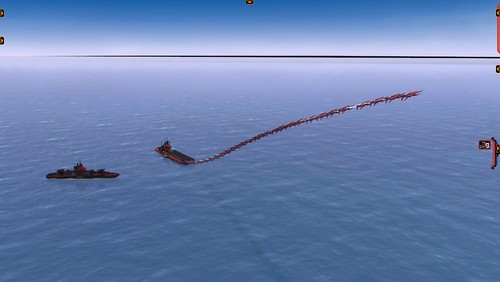 This is what it looks like when you launch fighter/bombers from an aircraft carrier.
This is what it looks like when you launch fighter/bombers from an aircraft carrier.
 This is what it looks like when you launch torpedo bombers from an aircraft-carrying flying saucer.
This is what it looks like when you launch torpedo bombers from an aircraft-carrying flying saucer.
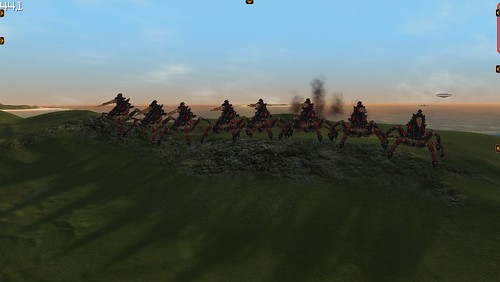 This is what a lot of Monkeylords look like.
This is what a lot of Monkeylords look like.
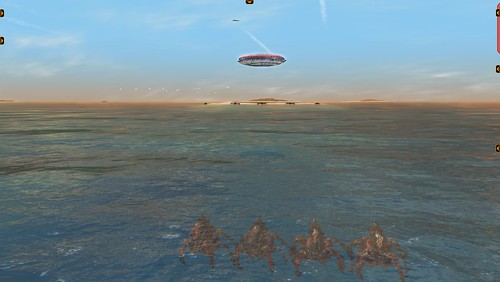 In SupCom 1, heavy shit just walks on the sea bed.
In SupCom 1, heavy shit just walks on the sea bed.
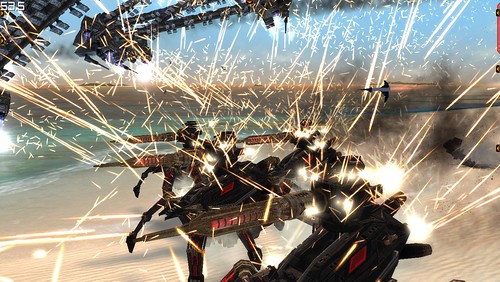 And Monkeylords don’t really care about transport fire.
And Monkeylords don’t really care about transport fire.
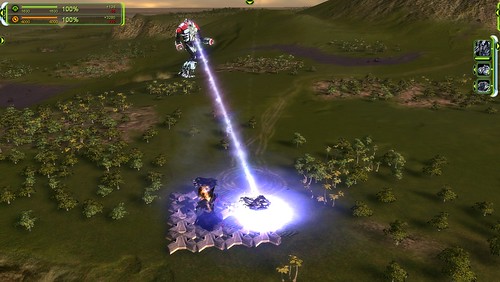 Face lasers were longer range.
Face lasers were longer range.
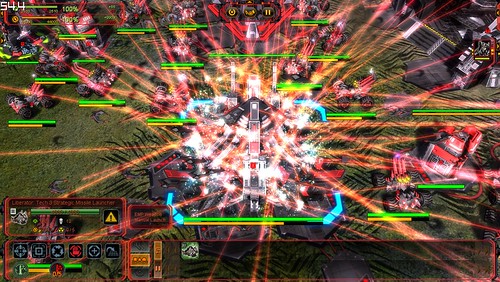 You sure could set a lot of shit to assist a thing.
You sure could set a lot of shit to assist a thing.
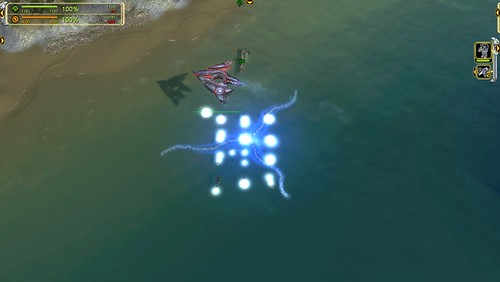 The fourth race has a bomber the size of a stadium. Those explosions? Those were battleships. That was one bomb.
The fourth race has a bomber the size of a stadium. Those explosions? Those were battleships. That was one bomb.
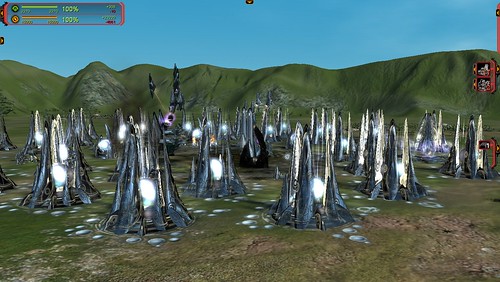 The fourth race has kind of awesome cities.
The fourth race has kind of awesome cities.
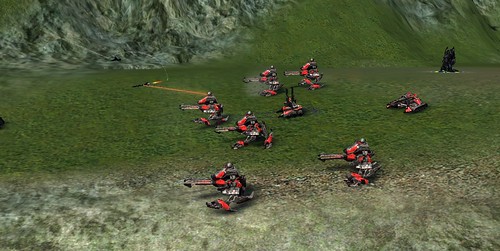 Tech 3 units are utterly badass. Here’s me discovering that Tech 3 Cybran assault bots can turn tactical missiles around mid-air.
Tech 3 units are utterly badass. Here’s me discovering that Tech 3 Cybran assault bots can turn tactical missiles around mid-air.
It’s £10 on Impulse.

Death Note
Almost anything that features a master criminal fancies itself as a battle of wits between him and the star detective. In practice, all that usually means is the bad guy leaves no evidence, then blunders into an obvious trap by the cop. Death Note actually is a battle of wits, though: the entire series revolves around two people desperate to eliminate each other, but prevented from doing so directly by the complicated mathematics of suspicion, guilt and uncertainty. Continued
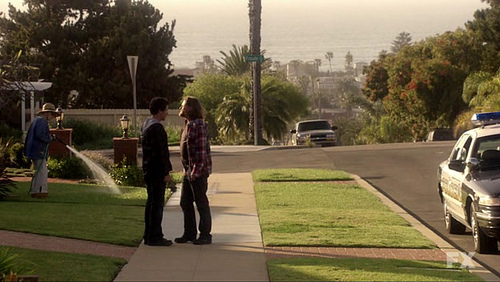
Terriers Again
I was pretty rude about the plot when writing about the pilot episode, but impressed by everything else. This is a quick update to say that, in the four episodes since then, that simple set up has changed dramatically every episode, and led to some superb twists and tense situations. Continued

The Social Network
Written by the West Wing’s Aaron Sorkin, directed by Fight Club’s David Fincher, starring Zombieland’s Jesse Eisenberg, produced by Kevin Spacey for some reason, and perhaps the first and only film to co-star Justin Timberlake as the founder of Napster.
The fact that it’s about the founding of Facebook, which I’m aware is controversial but have no actual knowledge of, is ideal. “I will feel like I’m being informed about something I’m interested in,” I thought, “and be unable to refute any liberties the film takes with the truth, allowing me to enjoy it entirely.” Continued
StarCraft 2: Single-Player
For about four years, everyone’s been scrambling to reinvent the RTS. Blizzard seemed like the only company sticking with the traditional mine-resources, build-buildings, mass-units structure – presumably because they didn’t dare undermine the professional scene that sprung up around the first StarCraft.
So they siphoned all their thick, sticky innovation into the single-player for StarCraft 2, where they can stick with the old high-level rules but make more interesting missions out of them.
In fact, they got a bit carried away. I’m used to high-budget strategy games giving me a lot of special-case missions, but StarCraft 2 never stops. I spent half the game waiting for a “Make a base, go kill theirs” mission that never came. Literally every single one is a custom showcase for one particular unit, an unusual objective, a pre-built base, no base at all, or revolves around a new rule they have to teach you on the fly.
At the risk of sounding like a tiny child, I don’t like it. I like to make my own bases. I like to choose the units I like, rather than have a whole mission structured to force me to appreciate one the game wants me to use. And I don’t like new rules.
Scripting a mission around a unique scenario always involves a degree of Bullshit: Bullshit you couldn’t have seen coming, Bullshit you’re forced to do, Bullshit to stop you taking shortcuts or being clever. Blizzard are so good, so big, rich and talented, that they’re able to avoid almost all the Bullshit that scripting causes on one, maybe two missions. The rest of the time, I’m punished for doing my own thing so much that I eventually learn to just play the way the mission designer wants me to. Use the unit he tells me to. Click what he tells me to click. It works, but it’s basically a waste of my time.
The zombie-frying mission is the one I’m thinking of as an example of pretty much Bullshit-free scripting. It does dictate certain aspects of the way you play, but the New Rule is easy to grasp and has a certain intuitive logic to it. And you can build whatever works for you: any effective army is effective here. Accordingly, it’s fun.
The other one I liked was the optional mission where you play as a female Ghost, separated from but supporting a larger army. Plenty of Bullshit, but the way it turned existing RTS mechanics into puzzle logic was interesting, and the mind-control ability has so many great applications. I’ve heard the alternative mission, with Utter Tosh, is good too, but his abilities seemed less exciting to me and I didn’t get anywhere with it.
I’m also a fan of the research system between missions, and the ability to postpone some missions for ages. But both are pretty minor bonuses. Two good missions, among thirty, isn’t enough to make me want to sit through the embarrassing cutscenes.
Pilot: Boardwalk Empire
Prohibition-era Sopranos. Steve Buscemi is a corrupt county treasurer in Atlantic City in the 20s, and it’s lovely to see him play a position of power. I’ve got so used to him as a snivelling loser that it’s surprising how well his perpetual sneer works as one of superior disdain. The tone is just right, for me: Buscemi’s character is a villain, but not repulsive so far. It’s possible to enjoy the early twentieth century opulence of his life without being put off by the guy himself.
Valve Steal Sixth James Weapon Idea, Sell It
You can now buy stuff for real money in Team Fortress 2. First thoughts:
- The world has ended. No further world can be built.
- Oh wait, you can still get everything for free.
- This is fine, so long as they don’t make the free route slower.
- Hey, they made the free route slower!
- Man, now they won’t even want to make a drop system that doesn’t suck – one that lets me work towards what I want, or ever gives me a hat.
- I’m glad crafting the new stuff is pretty easy, though.
- Wait a minute: finding a load of stuff I don’t want, plus easy crafting and trading, wavy-equals working towards what I want?
- Yes – very, very slowly, and with no hope of getting a hat.
So it’s not nearly as bad as it could have been. But I think it’s been mishandled: if the point really is to channel money to community contributors, only sell community items. Add your own when players demand it. And if you don’t want to make non-purchasers feel left out, launch with a few Valve-made weapons unlockable with achievements, and make them the focus.
Because that’s how I feel, as someone who doesn’t want to burn through a lot of cash on this. TF2 isn’t a game for me anymore – the only people who get to play it all are the ones prepared to pay. It’s nice that there’s a lot to unlock, but in practise, even the much lower crafting requirements are way too high for someone like me. It takes seven items I don’t want to make one that I do, and that’s more than I find in a month.
Even after months of play, I won’t have the +25 health that Scouts who pay do. The chances of finding all the items required for a set bonus, particularly the hat, are negligible.
I do really like the Black Box, though – a vampiric rocket launcher with a smaller clip. It limits your aggressive capacity, but suits the calculating way I play Soldier: safe distance, medkit near, Equaliser ready, Buff Banner steadily charging.
The item that’s closest to one of my suggestions, the knife that rapidly steals your victim’s identity, is a total bust. The ability itself is a satisfyingly stylish flourish, but they’ve paired it with a wildly disproportionate drawback: the inability to disguise at will.
That’s such a massive, constant pain in the arse for an advantage that’s really only useful when facing exactly two people, both of whom are looking the wrong way, and even then only if the second of them looks round less than a second but more than half a second after your kill. And doesn’t spy check.
They should have actually stolen my idea, rather than independently coming up with their own that has just enough in common for me to make false accusations about it on my blog. My knife had some trivial drawback that would rarely hinder anyone – it’d sell even better.

